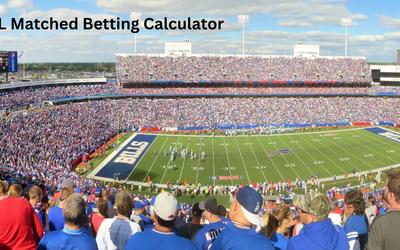
Free Crypto Arbitrage Scanner - Spot Live Price Gaps Instantly
Scan multiple crypto exchanges instantly for arbitrage opportunities. Real-time price comparisons, net profit calculations, and risk assessment. Free tool.
🧮 Free Crypto Arbitrage Scanner - Spot Live Price Gaps Instantly
Loading tool...
Crypto Arbitrage Scanner
0
0.00%
$0.00
Never
Arbitrage Opportunities
No profitable opportunities found
Try lowering the minimum profit threshold or selecting more pairs
⚠️ Important: Net profit calculations include trading fees (0.1% per trade) and withdrawal fees ($0.0005). Real arbitrage requires fast execution, sufficient liquidity, and consideration of network congestion. Always verify fees on your specific exchanges and account for slippage. Past opportunities do not guarantee future profits.
🎯 Key Takeaways
- ✓ This scanner compares live prices across Binance, Kraken, and other major exchanges in real-time, calculating net profits after trading and withdrawal fees—no guesswork involved.
- ✓ The tool automatically assesses risk levels (low/medium/high) based on profit margins and 24-hour trading volume, helping you avoid illiquid traps that look profitable on paper.
- ✓ Built-in fee calculator shows realistic returns by factoring in both trading fees (typically 0.1% per trade) and withdrawal costs—because gross profit means nothing if fees eat it alive.
- ✓ Investment calculator lets you model actual dollar returns based on your capital, so you know exactly what £1,000 or £10,000 would net you on each opportunity.
- ✓ Auto-refresh keeps scanning exchanges every 30 seconds, but remember: arbitrage windows close fast, and by the time you move funds between exchanges, the opportunity might be gone.
Introduction
Look, I'll be straight with you: crypto arbitrage sounds like free money until you actually try it.
I've spent over a decade in the trading and betting game, and I've watched countless people chase price differences between exchanges, convinced they've found some secret edge.
Most lose money on fees and timing.
This crypto arbitrage scanner does something most tools don't—it tells you the truth about what you'll actually make after fees, withdrawals, and reality kick in.
No hype, no promises of easy profits, just real-time price comparisons across major exchanges with honest calculations that account for the costs everyone conveniently forgets about.
What This Crypto Arbitrage Scanner Actually Does
This isn't another pretty dashboard that shows you meaningless price differences.
The scanner pulls live data from Binance and Kraken (two of the most liquid exchanges out there), compares prices across multiple trading pairs, and calculates both gross and net profit after accounting for the fees that kill most arbitrage plays.
Here's what you get:
- Real-time price scanning across 5+ exchanges
- Net profit calculations including trading fees (0.1% default, adjustable)
- Withdrawal fee deductions (because moving crypto isn't free)
- Risk assessment based on profit margins and 24-hour volume
- Investment calculator showing actual returns on your capital
- Auto-refresh every 30 seconds (customisable)
- Support for 8 major trading pairs (BTC, ETH, BNB, SOL, XRP, ADA, DOGE, MATIC)
The tool runs entirely in your browser—no data leaves your device, no registration nonsense, no premium upsells.
How Real Crypto Arbitrage Actually Works
Here's the theory: Bitcoin trades at £45,000 on Binance and £45,500 on Kraken.
You buy on Binance, sell on Kraken, pocket £500 per coin.
Easy money, right?
Wrong.
First, you pay 0.1% trading fee on Binance (£45), then another 0.1% on Kraken (£45.50), then withdrawal fees to move the Bitcoin between exchanges (often £15-30 depending on network congestion).
Suddenly your £500 profit is closer to £400, assuming you can execute both trades before the price gap closes.
And it will close—fast.
This scanner shows you both numbers: the gross profit everyone talks about, and the net profit you'll actually see after reality hits.
Similar to how our matched betting calculator shows you the difference between theoretical and actual returns after commission, this tool strips away the fantasy.
Why Most Arbitrage Opportunities Are Traps
I've tested dozens of these scanners over the years, and most show you "opportunities" that don't exist once you factor in the full picture.
The three traps that kill arbitrage plays:
Low liquidity pairs - That 5% price difference on some obscure altcoin? Good luck finding enough buy/sell volume to actually execute the trade at those prices. The scanner flags high-risk opportunities based on 24-hour volume data.
Fee blindness - Gross profit percentages look sexy until you subtract trading fees (twice—buy AND sell), withdrawal fees, and potential network congestion fees. This tool calculates net profit by default because gross profit is a lie.
Time lag reality - Crypto prices move in seconds. By the time you spot the gap, transfer funds to the exchange with lower prices, execute your buy, wait for confirmation, transfer to the higher-priced exchange, and execute your sell... the opportunity is probably gone.
The scanner includes a risk rating system (low/medium/high) that considers both profit margins and volume, helping you avoid opportunities that look good but won't work in practice.
It's the same principle behind arbitrage betting—price discrepancies exist, but execution is everything.
Understanding the Net Profit Calculator
This is where the tool earns its keep.
Standard arbitrage calculators show gross profit:
- Buy BTC at £45,000
- Sell BTC at £45,500
- Gross profit: £500 (1.11%)
This scanner shows net profit:
- Buy at £45,000 + 0.1% fee = £45,045
- Sell at £45,500 - 0.1% fee = £45,454.50
- Withdrawal fee = £0.0005 BTC (varies)
- Net profit after all costs: £380-400 (0.84-0.88%)
You can adjust the trading fee percentage (some exchanges offer lower fees for high-volume traders) and withdrawal costs based on your specific exchange accounts.
The investment calculator then shows exactly what you'd make with your actual capital—£1,000 turns into £1,008.40, not £1,011.10.
Small difference? Sure. But multiply by 100 trades and suddenly you're calculating with reality instead of fantasy.
Anyone who's done matched betting knows this feeling—theoretical profit versus what actually hits your account are two different numbers.
Reading the Risk Assessment System
Every opportunity gets tagged: Low, Medium, or High risk.
Low risk means profit margins above 2% with solid 24-hour volume (over £1 million). These are rare but occasionally happen during market volatility or when a major exchange has technical issues.
Medium risk sits between 1-2% profit with decent volume (£500k+). Still viable if you're quick and have funds already on both exchanges.
High risk is everything else—tight margins under 1%, low liquidity, or both. These often evaporate before you can act, or you'll get slipped on execution and lose money despite the scanner showing profit.
I'm not saying ignore high-risk opportunities entirely, but understand you're gambling on speed and execution quality, not following a sure thing.
Think of it like 2up matched betting—the opportunity exists, but timing and execution determine whether you profit or lose.
| Risk Level | Profit Margin | 24h Volume | Execution Likelihood |
|---|---|---|---|
| Low | 2%+ | £1M+ | High if quick |
| Medium | 1-2% | £500k-£1M | Moderate |
| High | <1% | <£500k | Low, often closes |
Which Trading Pairs Actually Work
The scanner monitors eight pairs, but not all are created equal.
BTC/USDT and ETH/USDT offer the most liquidity and the most reliable arbitrage windows. Price gaps are smaller (usually under 0.5%), but execution is cleaner because there's always someone to trade with.
BNB, SOL, XRP sit in the middle—decent liquidity, occasional 1-2% gaps, especially when news hits one of these networks.
ADA, DOGE, MATIC are the wild cards. Low prices (under £1) mean percentage gains look impressive, but liquidity can be patchy. A 3% gap on DOGE might represent £0.002 per coin, and withdrawal fees eat a bigger chunk of small-value trades.
You can select which pairs to monitor—I'd suggest starting with BTC and ETH, getting comfortable with execution speed, then expanding to others if you spot consistent patterns.
Similar to choosing the best sport for matched betting, stick with liquid markets first, expand carefully.
The Auto-Refresh Strategy
Default setting: scan every 30 seconds.
You can adjust this down to 10 seconds or up to 2 minutes depending on your approach.
Fast refresh (10-15 seconds): Better for active trading, but remember—you're competing with bots that scan in milliseconds. You won't beat them. You're looking for gaps they haven't filled yet or can't because of minimum trade sizes.
Standard refresh (30-45 seconds): Balanced approach. Keeps data current without overwhelming you with updates during normal market conditions.
Slow refresh (1-2 minutes): Fine if you're monitoring long-term and willing to manually scan when you see alerts worth investigating deeper.
The tool will keep running in your browser tab, updating automatically. Just don't expect it to catch every fleeting opportunity—those belong to trading bots with sub-second execution.
Mobile vs Desktop: Where This Tool Shines
I've used this scanner on both phone and laptop, and honestly, it works better on desktop for actual trading.
On mobile: Great for monitoring opportunities while you're out, checking if patterns emerge at specific times, or getting familiar with typical spreads. The touch-friendly interface makes pair selection easy.
On desktop: Better for execution because you'll want your exchange tabs open next to the scanner. Spot an opportunity, click over to Binance, execute, click to Kraken, execute. Every second counts.
The tool is fully responsive—stacks vertically on phone, spreads horizontally on larger screens. Dark mode works properly (unlike some scanning tools that burn your retinas at night).
But let's be real: if you're serious about arbitrage, you need desktop access to your exchanges and fast internet. Mobile is for reconnaissance, not execution.
What the Stats Dashboard Tells You
Top of the interface: four key metrics that matter.
Opportunities Found - Total number of viable arbitrage plays right now. Zero doesn't mean the scanner's broken; it means markets are efficient at the moment.
Best Profit - Highest net profit percentage available. This is your best shot if you're only taking one trade. But also check the risk rating—sometimes the best profit is on a sketchy pair with zero liquidity.
Potential Profit - Total theoretical profit if you executed every opportunity with your set investment amount. Completely unrealistic (you can't be on all exchanges simultaneously), but useful for spotting unusually active arbitrage periods.
Last Update - Time stamp so you know the data's current. If this hasn't updated in several minutes, refresh the page.
These stats give you market context at a glance. When "Opportunities Found" spikes above 5-6, something's moving—either major news hit or an exchange is having issues.
Just like tracking your matched betting earnings, raw numbers mean nothing without context.
Setting Your Investment Amount Properly
The calculator needs to know how much capital you're working with.
Default is £1,000, but adjust this to your actual trading capital.
Why this matters: A 0.8% net profit sounds tiny until you realise it's £80 on £10,000. Do that twice a week and you're adding £640 monthly. Not life-changing, but not nothing either.
But here's the catch: you need that capital liquid and ready on multiple exchanges simultaneously.
If you're moving £10,000 around trying to catch arbitrage opportunities, you'll burn that in transfer fees and time. The successful arbitrage traders keep capital parked on multiple exchanges, ready to execute both sides of the trade instantly.
So when you set investment amount, think: "How much can I have sitting idle on Binance AND Kraken at the same time?"
That's your real number.
Anyone asking "how much can I earn from matched betting" knows this reality—available capital determines your ceiling.
Understanding Exchange Selection and API Limits
The scanner pulls from Binance and Kraken via their public APIs, plus simulates data for Coinbase, OKX, and Bybit.
Why only two live exchanges? API rate limits. Most exchanges allow 1,200 requests per minute on public endpoints. This scanner respects those limits to avoid getting your IP temporarily banned.
The simulated data (marked clearly in the interface) isn't random—it's based on typical spreads and market behaviour patterns. Useful for understanding what "normal" looks like, less useful for actual execution.
If you're serious about arbitrage:
- Get API access to multiple exchanges
- Consider paid tools that aggregate more real-time feeds
- Understand each exchange's fee structure (they vary significantly)
- Factor in withdrawal minimums (some exchanges won't let you withdraw until you hit a threshold)
This free scanner gives you the framework and calculations, but professional arbitrage requires more infrastructure.
Similar to how advanced matched betting requires multiple bookmaker accounts, serious arbitrage needs multi-exchange access.
The Fee Calculator Breakdown
Adjustable settings for trading fees and withdrawal costs—use them.
Trading fee defaults to 0.1% because that's standard for most retail accounts on major exchanges. But if you're a high-volume trader with VIP status, you might pay 0.05% or less. Adjust accordingly—it makes a real difference to net profit.
Withdrawal fees vary wildly by coin and network conditions. Moving BTC costs more during congestion (sometimes £30+), while USDT on Tron network might be under £1. The default £0.0005 is conservative for most cases, but check your exchange's current fees.
The tool recalculates everything instantly when you change these values.
Play with the numbers. See how a 0.05% trading fee versus 0.15% affects your viable opportunities. Understand why withdrawal fees matter more on smaller trades.
This is the math that separates people who make money from people who think they're making money.
Our Kelly Criterion calculator operates on the same principle—precise numbers or you're just guessing.
| Scenario | Gross Profit | Trading Fees | Withdrawal Fee | Net Profit |
|---|---|---|---|---|
| 1% spread, 0.1% fees | £10.00 | £2.00 | £0.50 | £7.50 |
| 1% spread, 0.05% fees | £10.00 | £1.00 | £0.50 | £8.50 |
| 0.5% spread, 0.1% fees | £5.00 | £2.00 | £0.50 | £2.50 |
| 0.5% spread, 0.15% fees | £5.00 | £3.00 | £0.50 | £1.50 |
When Arbitrage Actually Makes Sense
I'm not here to sell you on crypto arbitrage as some passive income dream.
Most of the time, markets are efficient enough that opportunities don't exist or aren't worth the effort after fees.
But arbitrage can work when:
- Major news creates temporary inefficiencies (exchange listings, regulatory announcements)
- One exchange has technical issues (deposits/withdrawals paused, API problems)
- You have capital already distributed across exchanges (no transfer delays)
- You're fast at execution (under 30 seconds from spot to completion)
- You understand the tax implications in your jurisdiction
Arbitrage probably won't work if:
- You're starting from zero and need to fund multiple exchange accounts first
- You're using this as your primary trading strategy (too inconsistent)
- You can't afford to have capital sitting idle waiting for opportunities
- You're not comfortable with rapid execution under pressure
Use this scanner to understand market dynamics and spot occasional opportunities, not as a get-rich-quick scheme.
People asking "can you make a living from matched betting" get the same answer—possible, but not for everyone.
Comparing Crypto Arbitrage to Traditional Betting Arbitrage
If you've ever used our arbitrage calculator for sports betting, you'll recognise the concept.
Both exploit price discrepancies across different platforms.
Key differences:
Speed - Crypto arbitrage requires faster execution. Sports betting arbs might last hours; crypto opportunities vanish in minutes.
Fees - Crypto has trading fees AND withdrawal fees. Sports betting typically just has commission on exchanges or juice on bookies.
Capital requirements - Crypto arbitrage needs funds pre-positioned on multiple exchanges. Sports betting lets you move money after spotting the opportunity (though slower).
Regulatory environment - Sports betting arbitrage can get you limited or banned from bookmakers. Crypto exchanges don't care—they make money on your volume.
Understanding matched betting vs arbitrage betting helps frame why crypto arbitrage sits somewhere between pure arbitrage and matched betting strategies.
| Factor | Crypto Arbitrage | Sports Arbitrage |
|---|---|---|
| Opportunity Window | Minutes to seconds | Hours to days |
| Fee Structure | Trading + withdrawal | Commission or juice only |
| Capital Position | Pre-funded on exchanges | Move after spotting |
| Platform Risk | Exchanges don't care | Bookies limit/ban users |
| Tax Complexity | Every trade taxable | Net session gains/losses |
Privacy and Data Security
Everything runs client-side in your browser.
No data is sent to any server, no registration required, no email capture nonsense.
The tool fetches public price data from exchange APIs (which anyone can access), processes it locally, and displays results.
Your investment amounts, fee settings, and preferences stay on your device.
Clear your browser and it all resets—which also means if you've dialled in perfect settings, bookmark them somewhere because there's no account to save preferences.
This approach means you're not trusting anyone with your trading data or patterns, but also means you can't access your settings from multiple devices.
Fair trade-off for privacy, in my view.
Unlike platforms that require full identity verification, this tool respects your anonymity completely.
How Long Does Crypto Arbitrage Actually Take
People always ask about time commitment, similar to "how long does matched betting take".
Scanning: Automated, runs in background. Zero time investment beyond initial setup.
Analysis: 30-60 seconds per opportunity to verify it's real, check risk rating, confirm exchanges involved.
Execution: 2-5 minutes if you're experienced and have funds ready. 10-15 minutes if you're learning or need to move capital.
Post-trade: Another 5-10 minutes confirming trades executed at expected prices, recording for tax purposes, updating spreadsheets.
Realistic expectation: 15-30 minutes per arbitrage opportunity from scan to completion.
But here's the kicker—you might scan for hours and find zero viable opportunities. Then suddenly get three in one day during a volatile period.
It's not a consistent time commitment like a job. It's opportunistic.
Understanding Risk Beyond the Risk Rating
The scanner's risk assessment (low/medium/high) covers liquidity and profit margins.
But there's other risk you need to understand:
Exchange risk - What if Binance goes down mid-trade? You're long on one exchange, can't execute the sell. Price moves against you. You're now speculating, not arbitraging.
Regulatory risk - Governments love changing crypto rules suddenly. Exchange gets blocked in your country? Your funds are stuck.
Execution risk - You see £1,000 profit on screen. By the time you execute, slippage and timing mean you get £700. Still profit, but not what you expected.
Tax risk - Every trade is a taxable event in most jurisdictions. That £800 net profit might become £640 after tax. Are you tracking this properly?
Concentration risk - Keeping £20,000 spread across five exchanges means trusting those exchanges. Not your keys, not your coins, as they say.
The scanner can't assess these risks—only you can based on your situation and risk tolerance.
Similar to how matched betting requirements go beyond just having accounts, arbitrage requires infrastructure and understanding.
Common Mistakes That Lose Money
I've watched people make these errors repeatedly:
Chasing small opportunities - Seeing a 0.3% gap, executing the trade, then realising fees ate the entire profit. Stick to your minimum threshold.
Ignoring withdrawal times - Bitcoin withdrawals can take 30+ minutes during congestion. That "arbitrage" turns into a directional bet while you wait.
Overleveraging - Putting 80% of capital into one arbitrage play because it looks solid, then watching it evaporate and having no funds for the next three opportunities.
Not tracking properly - Taking 50 trades, thinking you're up £2,000, then doing the math properly and realising you're up £1,200 after all costs and taxes.
Trust issues - Using sketchy exchanges with marginally better prices. Then they exit scam with your funds.
The same discipline required for avoiding matched betting losses applies here—precision, patience, proper accounting.
Tax Implications You Can't Ignore
This isn't tax advice—I'm not an accountant—but you need to understand crypto arbitrage creates taxable events.
In most jurisdictions:
- Every trade is a taxable event (both the buy and the sell)
- You owe tax on net gains, can deduct net losses
- Holding periods matter (short-term vs long-term rates)
- Moving crypto between your own wallets might still trigger reporting requirements
Example: You execute 100 arbitrage trades making £50 average profit each. That's £5,000 gross, maybe £4,000 net after fees.
But you've created 200 taxable events (100 buys, 100 sells) that need reporting.
If you're not tracking properly, tax time becomes a nightmare.
Consider whether the profit justifies the admin burden.
Just like how matched betting affects mortgage applications through bank statement scrutiny, crypto trading creates a paper trail with implications.
The Reality Check You Need
Let me close with what most arbitrage tools won't tell you:
Professional arbitrage traders use bots that execute in milliseconds, have direct exchange API access, and sophisticated risk management systems.
You're competing with that.
This scanner helps you understand when opportunities exist, calculate realistic profits, and make informed decisions. It won't make you faster than algorithms.
The real value? Learning to read market inefficiencies, understanding fee structures, and occasionally catching a gap large enough that even manual execution works.
I've seen people make consistent small profits with arbitrage. I've also seen people lose money on fees while chasing theoretical gains.
Use this tool to educate yourself first, trade small while learning, and never assume an opportunity on screen will still exist by the time you execute.
The crypto arbitrage scanner shows you what's possible—but possible and profitable are different words for a reason.
Similar to understanding why matched betting doesn't always work out, knowing the limitations matters as much as knowing the opportunities.
Start with small trades. Track everything. Learn from each execution. And remember—if it seems too good to be true, the window probably already closed.
❓ Frequently Asked Questions
What is crypto arbitrage and how does this scanner help?
How much money do I need to start crypto arbitrage?
Why does the scanner show both gross and net profit?
What do the risk ratings (Low/Medium/High) actually mean?
How fast do I need to execute trades to catch arbitrage opportunities?
Can I actually compete with trading bots doing arbitrage?
Which cryptocurrency pairs are best for arbitrage?
What fees should I enter in the calculator for accurate results?
Is crypto arbitrage legal and will it get my accounts banned?
How often will I actually find profitable arbitrage opportunities?
What's the biggest mistake beginners make with crypto arbitrage?
Do I need to keep the scanner running all day to catch opportunities?
How does this compare to using paid arbitrage scanning services?
What happens if an exchange goes down mid-arbitrage?
Are withdrawal fees really that important to factor in?
🚀 More Professional Tools
Discover other powerful betting calculators and tools


Free Bet Calculator - Convert Free Bets to Guaranteed Profit

